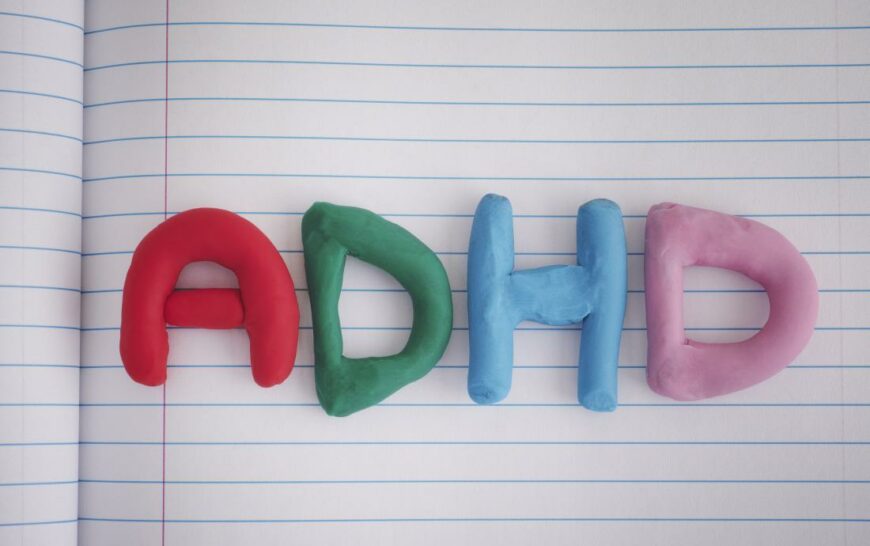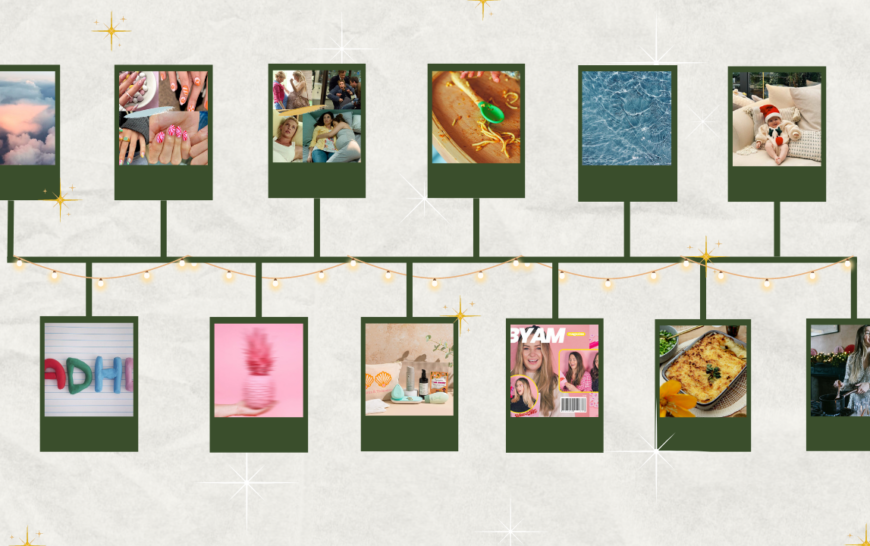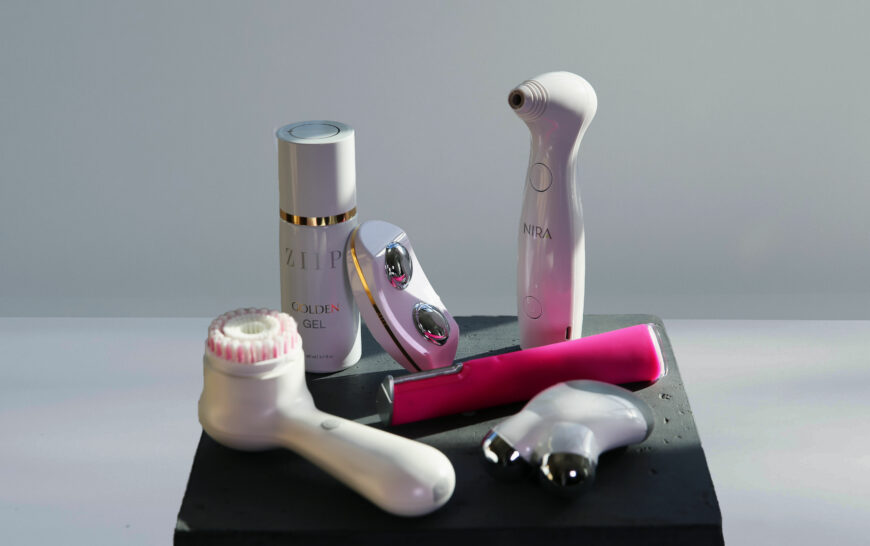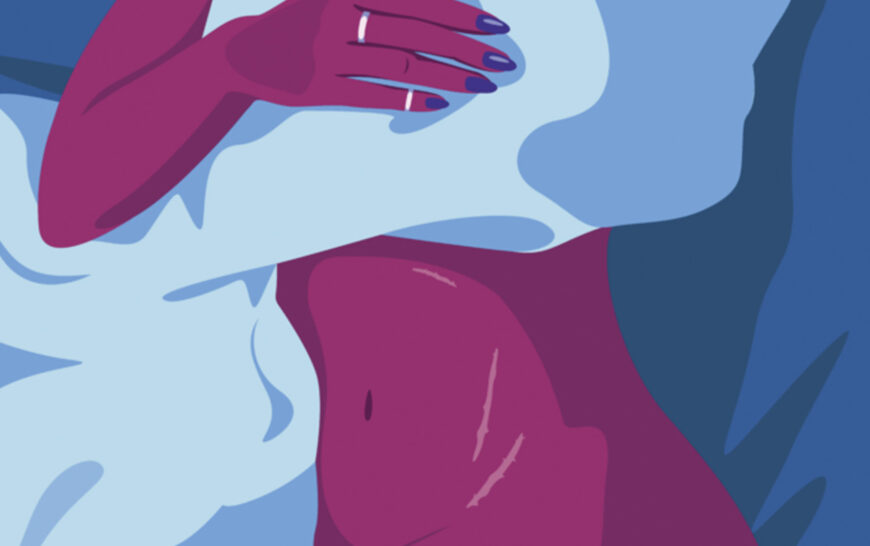
Understanding Adult ADHD: How TikTok Is Inspiring Women To Seek Diagnosis
The disorder is estimated to affect 1.5 million adults in the UK (ADHD Action), but only a fraction of those - around 120,000 - are formally diagnosed making the journey to understanding why life can feel so challenging for those impacted even more so.
Restlessness, an inability to concentrate, mood swings, forgetfulness and an inaptitude for dealing with stress. Whilst all of the above are barriers to a peaceful life we all battle from time to time, the cocktail of them all, plus countless more, can be symptoms of attention deficit hyperactivity disorder, known commonly as ADHD. The disorder is estimated to affect 1.5 million adults in the UK (ADHD Action), but only a fraction of those – around 120,000 – are formally diagnosed making the journey to understanding why life can feel so challenging for those impacted even more so.
The common perceptions of ADHD contribute to an environment that makes it increasingly difficult to receive a diagnosis in adulthood
And whilst research and public knowledge of the disorder continues to focus on boys in childhood, the common perceptions of ADHD contribute to an environment that makes it increasingly difficult to receive a diagnosis in adulthood, in particular for women who are consumed with mental hyperactivity and inattentiveness. Behaviours specific to women differ from those typically documented too, and can include daydreaming and often feeling in a world of their own, a tendency to be disorganised, late or messy (both in appearance and physical space), being highly sensitive to noise, fabrics, and emotions and feeling overwhelmed during social events but overcompensating by talking a lot and interrupting conversation. Being expected to contribute and partake in the systems, roles and relationships assumed of us in adulthood can feel truly impossible and exhausting to manage.
According to Verywell Mind– award-winning resource for reliable, compassionate, and up-to-date mental health information- below are some of the most typical ADHD symptoms girls and women may experience:
- Appearing withdrawn
- Daydreaming
- Difficulty maintaining focus; easily distracted
- Doesn’t appear to be trying
- Doesn’t seem motivated
- Forgetful
- Hyper-talkative (always has lots to say, but is not good at listening)
- Hyperreactivity (exaggerated emotional responses)
- Appearing to be making “careless” mistakes
- Problems completing tasks
- Seeming shy
- Seeming to get easily upset
- Shifting focus from one activity to another
- Taking time to process information and directions; seems like she doesn’t hear you
- Verbally impulsive; blurts out and interrupts others
It’s important to note though that whilst common, ADHD in adulthood does not always carry a sense of chaos, and can in fact sometimes be perceived as a never-ending ability to be enthusiastic, energised and hyper-focused when a goal is in need of completion. In education, women with ADHD are bright and intelligent as their symptoms can present more subtly, however at critical times (such as during exams) they may underperform due to concentration issues, and the cycle of perfectionism begins again.
In education, women with ADHD are bright and intelligent as their symptoms can present more subtly, however at critical times (such as during exams) they may underperform due to concentration issues, and the cycle of perfectionism begins again.
Non-profit organisation Understood (who are dedicated to helping those who learn and think differently thrive at home, in school and life) say, “People with ADHD aren’t often thought of as perfectionists. On the surface, it might seem like they race through tasks and ignore details without worrying about the consequences. Still, some people with ADHD can be perfectionists. Perfectionism isn’t just about trying to do a good job. It’s about getting stuck in ways that make it harder to get things done in a reasonable amount of time. It’s also about being too anxious about small details.” It’s these conflicting behaviours that can make ADHD difficult to understand both for someone struggling and those closest to them- “how can a person who has trouble focusing on most things lose themselves in a video game, movie, or craft project for hours?” (Understood).
Problems arise in such behaviours when someone does not possess the ability to focus on something they may not personally find interesting, and also in the inability to remove focus from an interesting subject when the time comes and other responsibilities call. Behaviours, such as hyper fixation, which typically present in women are documented, publicised and discussed far less in comparison to the more commonly associated ADHD symptoms and why it’s far less common for women to seek help.

Manchester-based mental health and style content creator Francesca Perks openly shared her experience of being diagnosed with ADHD in her twenties and both the challenges and relief that came with it.
Of the people I confided in, only my best friend “believed” meFrancesca Perks
“Truthfully, it was tough pushing through my diagnosis. Of the people I confided in, only my best friend “believed” me. I now know my parents, and closest people in my life’s initial dismissal didn’t come from a lack of love or care, simply by the fact that ADHD is so utterly misrepresented in the media, and even more so for women with ADHD. Confiding especially in my parents regarding my initial decisions to seek a diagnosis felt like it fell on deaf ears. To them there was no way I could have ADHD because I wasn’t the “naughty schoolboy” Bart Simpson character trope running circles in the classroom.”
Fran’s route to diagnosis wasn’t necessarily typical, but comes as a product of the lifestyle changes many of us experienced during the pandemic, and the rise of the social media platform that’s seen screen time rocket: TikTok.
It took a countless number of times going through the motions of believing myself to berating myself for nearly a year until I plucked up the courage to ask for a referral.Francesca Perks
“The pandemic for a whole lot of us was our awakening to TikTok. That For You Page really said “Fran you may want to take a seat because this is for YOU” time and time again when I was repeatedly being shown “Signs you have may ADHD” or “What does ADHD in women look like” TikToks for the latter part of 2020. I would watch utterly captivated and finally felt understood. For months and months I repeated the same pattern: I would ruminate on what suddenly, could be the answer for a life that at the time I could only blame myself for, and then (because of the low self-esteem that comes with undiagnosed ADHD) I defaulted to, ‘Fran, you don’t have ADHD you’re just overwhelmed/forgetful/lazy/unorganised/a bad attempt of being a human being:’. It took a countless number of times going through the motions of believing myself to berating myself for nearly a year until I plucked up the courage to ask for a referral.

“The day I got my diagnosis, although there was a plethora of flooring emotions swirling around, vindication was a large one. With the self-esteem issues that come with undiagnosed ADHD in women – largely, due to the issues we face with ADHD, we take inward and blame ourselves other than, god forbid, a neurodevelopmental disorder – to keep on pushing through the most trusted opinions of people in your life in order to believe in yourself felt almost euphoric.
It’s changed my world over and over. Diagnosis alone, not even in regards to medication has given me a much better scope of who I am as a person, past and present, and given me the ability to forgive my past self for the missteps in my life that, up until the diagnosis, I took inwards and blamed myself for.
Francesca Perks
“However, the most profound takeaway I had from my positive diagnosis was a stark reminder to trust myself and my intuition for fighting to get the diagnosis, manoeuvring through the failings and missteps from my doctors and all the times when the process was stagnant and the peers in my life that dismissed me. It was the perfect storm for me to simply just give up, and settle with the notion that I was simply the problem. There is absolutely no harm in seeking answers, and whether that be a positive or negative diagnosis, you’re a step closer to understanding yourself, and potentially leading you in the direction of knowing yourself better. That can *only* be a great thing right?”
Thankfully, as attitudes change and new research continues to provide a clearer look at ADHD and its impact, the scope for seeking help and successfully managing symptoms grows. Companies such as ADHD 360 (used by Fran to receive her diagnosis) offers a no-fee initial screening which, if suggestive of a potential positive diagnosis, will lead to an official assessment and regulated treatment plan to help you on your ADHD journey.

Help and Support
There is no cure for ADHD and the behaviours it presents, but there are plenty of options when it comes to managing and improving the quality of life of those who struggle with it. There are 5 types of medicine licensed for the treatment of ADHD: Methylphenidate (the most commonly used), Lisdexamfetamine, Dexamfetamine, Atomoxetine, Guanfacine which may help someone with the condition concentrate better, be less impulsive and overall feel a greater sense of calm.
Therapy is often suggested as a means of managing ADHD, in particular CBT, with a 2016 neuroimaging study of adults with ADHD showing improvements in ADHD symptom ratings and beneficial changes in the same brain regions that are typically monitored in studies of medication treatment after a 12-session course of CBT. This type of talk therapy works by helping to improve daily life struggles those with ADHD may face, including procrastination and time management, and not by treating the core symptoms of inattention, hyperactivity, and impulsivity. One of the most helpful means by which therapy can help someone with ADHD to feel more in control of their behaviours is through education, helping to normalise and manage their symptoms and understand that their tendencies are not character flaws.
You are able to give yourself an air of grace with every ADHD-ish misstep you make, when before I would take that guilt inwards and it would simply be another strike on the quite lengthy tally of – God you really are quite bad at existing
Francesca Perks
For help, support and a sense of solidarity online, we love Instagram pages @iampayingattention (the badass neurodivergent membership platform designed with women in mind), @the_adhd_femme_collective (the vision behind the The ADHD Data Gap campaign passionate about normalising the experiences of women with ADHD) and @noranordfromnorway, founder of the ‘You & Me: Let’s Talk About ADHD’ podcast and photographer, whose portrait series sees her meet people who experience ADHD and hear their underrepresented stories. To accompany this work and support the community the project has formed, she has compiled an ongoing resources list of documents, books, and organisations most helpful, wherever an individual is on their ADHD journey.




